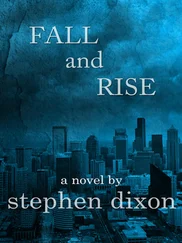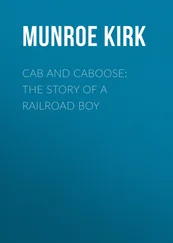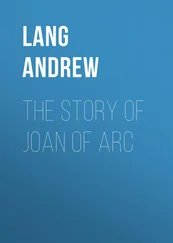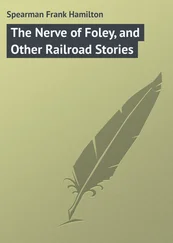Two other flight attendants had recently switched careers: Alfred Marchand had turned in his badge and gun as a police officer to become a flight attendant a year earlier; and Robert Fangman had begun flying for United just eight months earlier. He gave up half his income and a job he hated, as a cellphone salesman, to follow his dream of international travel.
Airplanes bring together people from different worlds and worldviews. On Flight 175, that held true for two strangers, Robert LeBlanc and Brian “Moose” Sweeney, one old, one young, one a pacifist, the other a U.S. Navy veteran of the Iraq War who considered himself a warrior and imagined himself to be the descendant of Vikings. The two men sat in window seats on opposite sides of the coach cabin.
THE PREVIOUS DAY, with many miles ahead on a seven-hour drive, Robert LeBlanc gripped the steering wheel of his Audi sedan and prepared to pop the question. He was seventy years old, spry and fit, a snowy beard and tanned, craggy face giving him the look of an arctic explorer.
After a weekend visiting Rochester, New York, Bob and his driving companion were headed home to the little town of Lee, New Hampshire. A retired professor, Bob would be leaving before dawn the next day, September 11, for a geography conference on the West Coast. Now he’d reached a decision: he knew how he wanted to spend his remaining seasons, and with whom. He turned toward the woman he loved.
“I have a ten-year plan,” Bob said. “I know you might not be ready, but I want you with me.”
Sitting in the passenger seat, Andrea LeBlanc understood what Bob was asking. After all, she’d been married to him for twenty-eight years. Bob hoped Andrea would dramatically scale back her busy veterinary practice so they could travel the world together. Bob’s ten-year plan involved “hard” trips to developing countries at the farthest corners of the globe, after which they’d ideally spend a decade visiting the “easy places.” That is, if Andrea would agree.
Bob was asking a lot, and he knew it. Along with raising their children—two from her first marriage, three from Bob’s—Andrea’s Oyster River Veterinary Hospital had been her life’s work. Nearly fourteen years his junior, Andrea would have to choose between spending the bulk of her time with her four-legged patients or with her best friend. As they drove, Bob’s question hung in the air long enough for Andrea to consider the man she loved and the life they shared.
Born in 1930, Bob grew up in the French Canadian neighborhood of Nashua, New Hampshire, at the time a spent mill city. A restless boy, he often rode his bicycle downtown to see trains pull in from Montreal. Bob grew fascinated by why people lived where they lived, and how their physical world shaped their culture, from language to music, religion to livelihood, relationships to diet.
After high school, Bob enlisted in the Air Force. After a flirtation with geology at the University of New Hampshire, he earned a doctorate in cultural geography from the University of Minnesota. Then Bob returned to UNH as a professor and remained there for thirty-five years, until he retired in 1999. Along the way, he developed a reputation as a gifted teacher, frugal toward himself and generous toward others; a master cook who loved candlelit dinners; and a passionate traveler whose been-almost-everywhere map included Nepal, Bhutan, China, Morocco, Peru, South Africa, Botswana, Namibia, and Burma.
On a 1999 trip to Java, Bob led Andrea to the world’s largest Buddhist temple, called Borobudur. While he explored, Andrea set off in search of a rare bas-relief panel that depicted the Buddha among animals. Ten Muslim teenagers followed her, inching closer in the hope of practicing their English. Eager to return to quiet contemplation and her search for the sculpture, she made a suggestion.
“Go look for a man with a white beard,” Andrea told them. “That’s my husband. He’d love to talk with you.”
Forty minutes later, as she neared an exit, she heard gales of laughter: Bob was leading an impromptu class, asking questions, drawing his new friends into his sphere. Andrea snapped a photograph of the Muslim teens squeezed against a smiling Bob.
Two years earlier, in Chiapas, Mexico, they had watched as leftist Zapatista revolutionaries marched through the streets. Andrea asked Bob what drove the young men to take up arms. “When people aren’t heard long enough,” he said, “they’ll resort to violence.”
During their just-completed weekend in Rochester, Andrea and her daughter Nissa had wandered around a craft fair. Andrea said: “It’s just so strange. I cannot even imagine being any happier.”
“That is so weird,” Nissa said, stopping in her tracks. “Dad said the same thing to me last night.”
In the car, drawing closer to home, Bob waited as Andrea weighed his question about their future travels together. Reflecting on the man behind the wheel, Andrea felt that he had given her so much, asking relatively little in return. She turned to Bob with her answer: “Okay, I’ll do it.”
Bob woke before dawn to catch United Flight 175. As he left their bedroom, he promised Andrea that he’d call her that night. He put a copy of his California itinerary on the refrigerator, alongside newspaper clippings of recipes he intended to try. As he moved through the house, Bob looked sharp, his thick white hair freshly cut by Andrea the night before. On his desk were plans for no fewer than five trips, starting in ten days with leading a group of older travelers to Argentina, followed by jaunts to India and Norway.
Waiting outside at 5 a.m. to drive him to Logan Airport was Bob’s daughter Carolyn. On the way, they became so lost in conversation they almost missed the exit. Bob loved airports the way some children love construction sites. Happy, he bounded into Terminal C, holding a boarding pass for seat 16G.
ON THE OTHER side of the aisle, the self-described warrior in 15A was named Brian David “Moose” Sweeney (no relation to Flight 11 flight attendant Amy Sweeney).
Brian grew up in the little Massachusetts town of Spencer, where nothing much had happened since Elias Howe perfected the sewing machine there in 1846. He earned a football scholarship to Boston University, where opposing players noticed his bright blue eyes just before they saw stars. Known as Sweenz to his friends, Brian and a fellow lineman shared another nickname: the Twin Towers.
After college, Brian searched fruitlessly for a challenge, until he saw an air show display by F-14 fighter jets. He enlisted in the Navy and graduated at the top of his class to become a naval aviator. Brian served in the Persian Gulf War, enforcing the “no-fly zones” in Iraq, then taught at the Navy Fighter Weapons School, better known by its movie title name, Top Gun. He convinced himself that generations earlier, Norse warrior blood had mixed with his Irish heritage, so he fashioned a two-bladed battle-ax and a Viking helmet, complete with horns. He wore it on Halloween and whenever the mood struck.
While teaching at the Top Gun school, Brian twisted his neck during a flight maneuver and shattered two cervical disks, leaving him partially paralyzed while in midair. The military crash-and-burn team rushed out, but it left empty-handed when Brian somehow landed safely. Brian loved the Navy, but after surgery he faced an agonizing choice between a desk job and an honorable discharge. His commanding officer told him: “You have the heart of a warrior and the soul of a poet. You’ve proven your mettle as a warrior, now go find your spirit.” Brian stayed close to military service by working as an aeronautical systems consultant for defense contracting companies.
In 1998, Brian strolled into a snooty Philadelphia bar crawling with Wall Street types in custom suits. At six feet three and a rugged 225 pounds, wearing jeans, a denim shirt, hiking boots, and a baseball cap, Brian stood out like a linebacker among jockeys. A fit, pretty young woman named Julie spotted him from across the bar. She told her friend: “That’s the kind of guy that I can marry and sit in front of a fireplace in the Poconos with, and be happy.” The attraction was mutual.
Читать дальше












